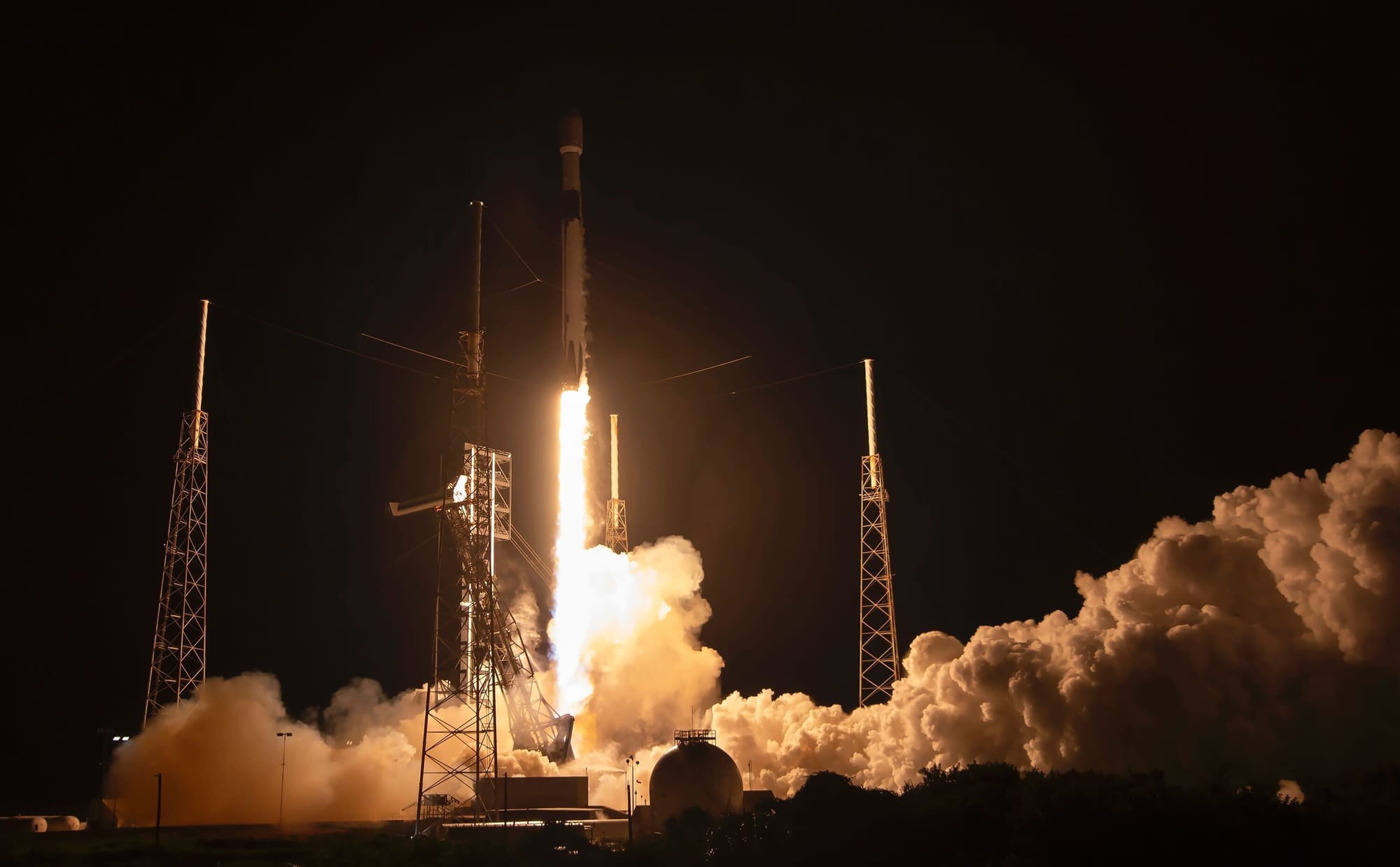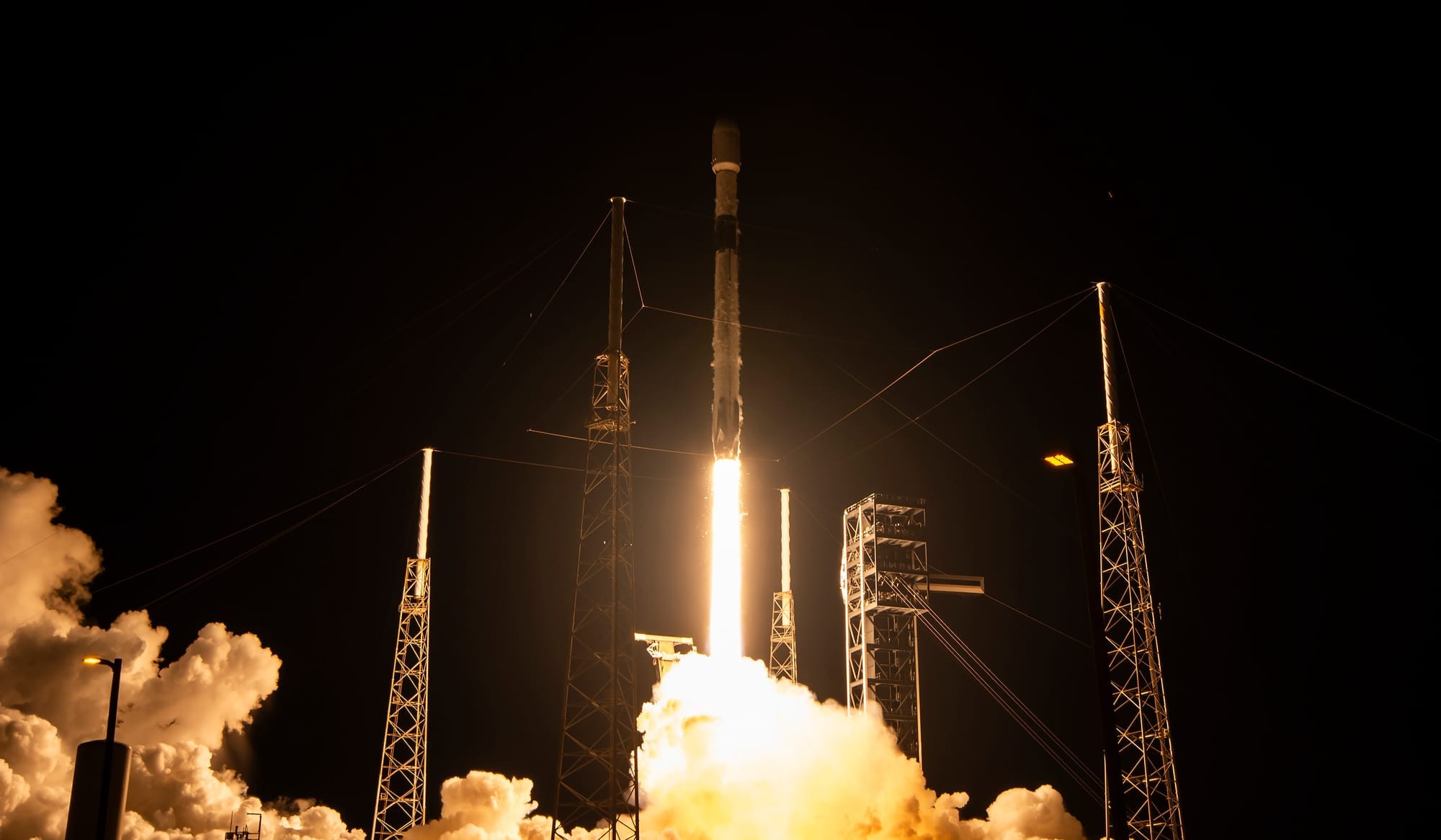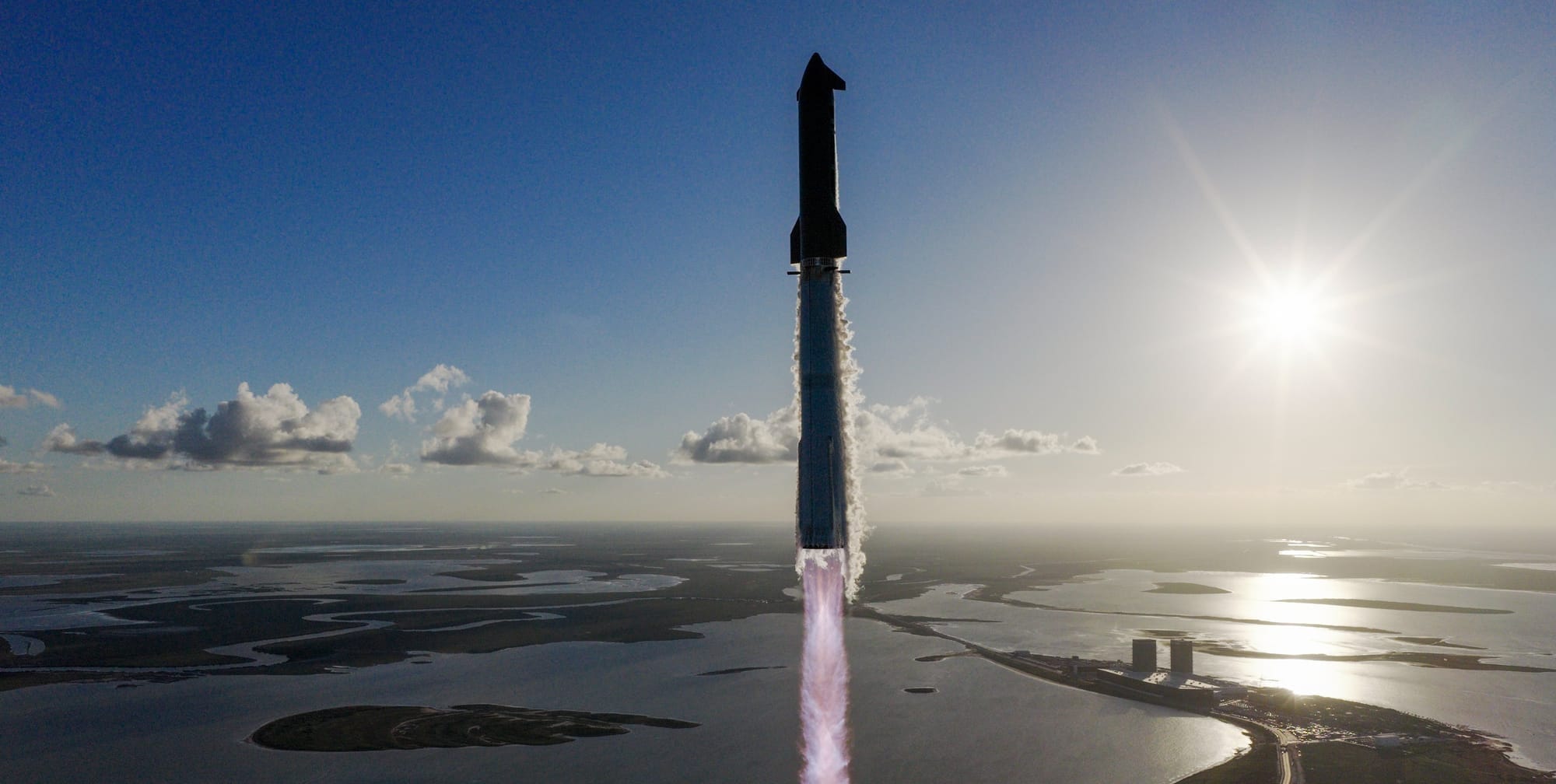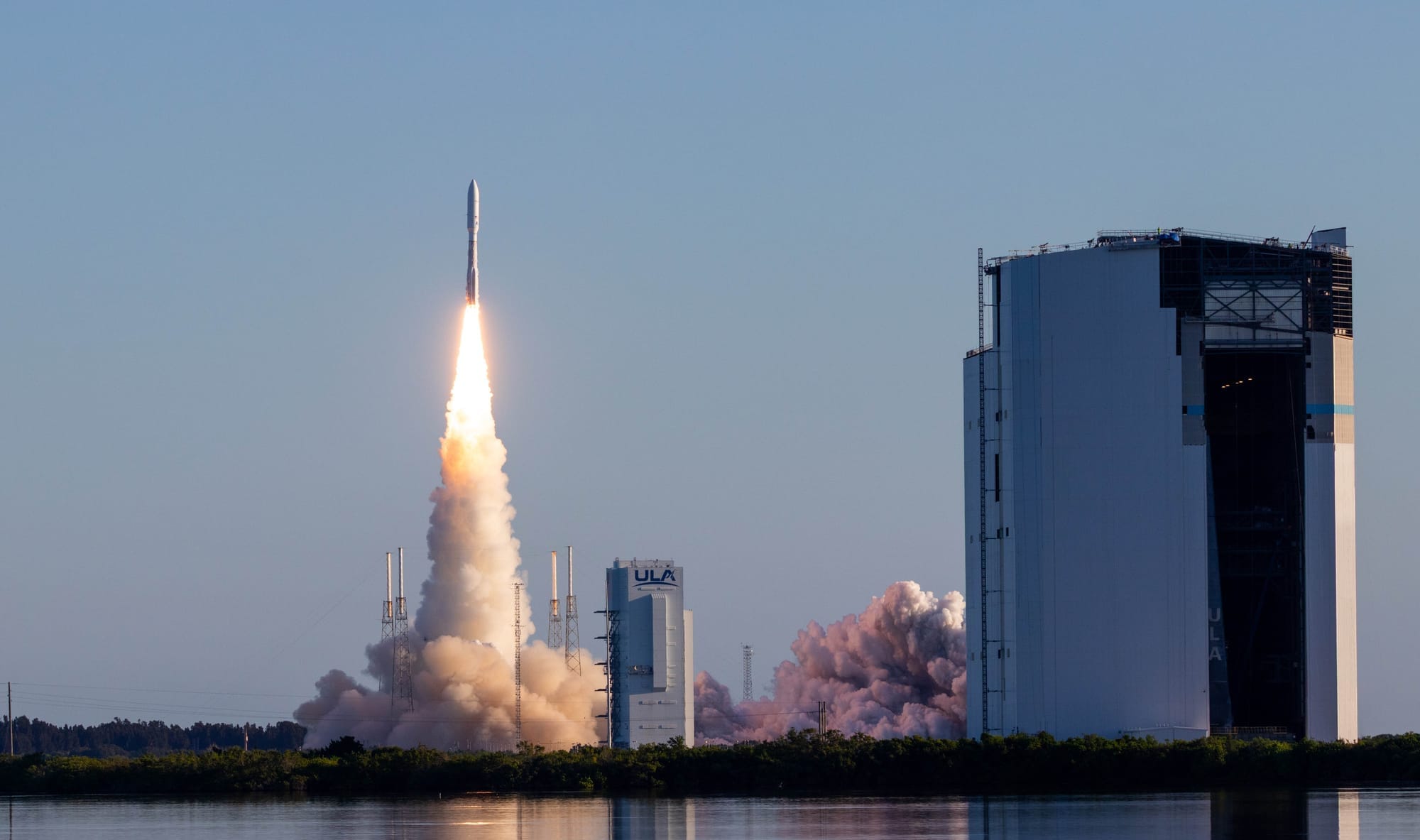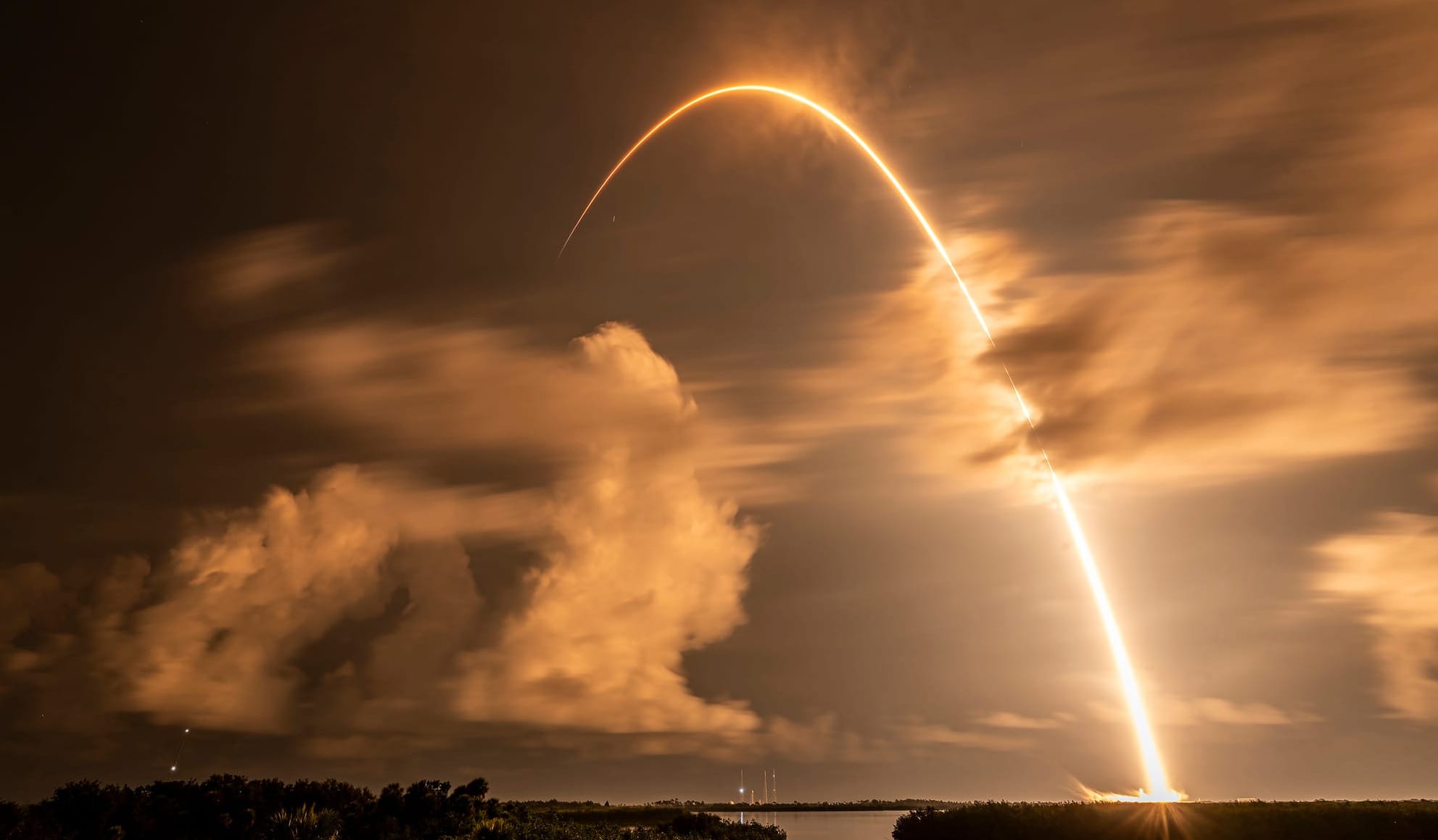Table of Contents
A Falcon 9 launched from Space Launch Complex 40, in Florida, at 06:30 am UTC on July 16th, heading for low Earth orbit carrying a batch of Kuiper satellites for Amazon.
In support of the mission was a brand new Falcon 9 booster was performing its first flight, and landing in the Atlantic Ocean on the drone ship 'A Shortfall Of Gravitas'.
Falcon 9’s first stage has landed on the A Shortfall of Gravitas droneship pic.twitter.com/paR1pYhTyW
— SpaceX (@SpaceX) July 16, 2025
Falcon 9's first-stage lands on the drone ship 'A Shortfall Of Gravitas', via SpaceX on Twitter.
For the mission, Falcon 9 delivered the 24 Kuiper satellites to an orbital altitude of 465 kilometers, where they were deployed from the rocket's second-stage over around eight minutes. Following the separation, the constellations operations team took over control of the satellite group.
With the launch of a third group of satellites, Amazon now has 78 spacecraft in orbit, out of a planned total of 3,236. The group of 24 follows two groups of 27 launched atop of United Launch Alliance's Atlas V in April and June.
Those and the new Kuiper satellites are currently headed to an orbital altitude of around 630 kilometers, with an inclination of 51.9 degrees, to begin offering internet services to customers. Following the deployment of further satellites, services from Kuiper are planned to be available later this year at speeds of up to one gigabit per second.
In order to meet a deadline with the U.S. Federal Communications Commission, half of the Kuiper constellation, around 1,600 satellites, will need to be launched by mid-2026. Currently, Amazon has bought over eighty launches to deploy the constellation from a variety of American and European launch providers. Additionally, Amazon has invested 140 million United States Dollars in a spacecraft storage and integration facility at Cape Canaveral to streamline launch preparations.
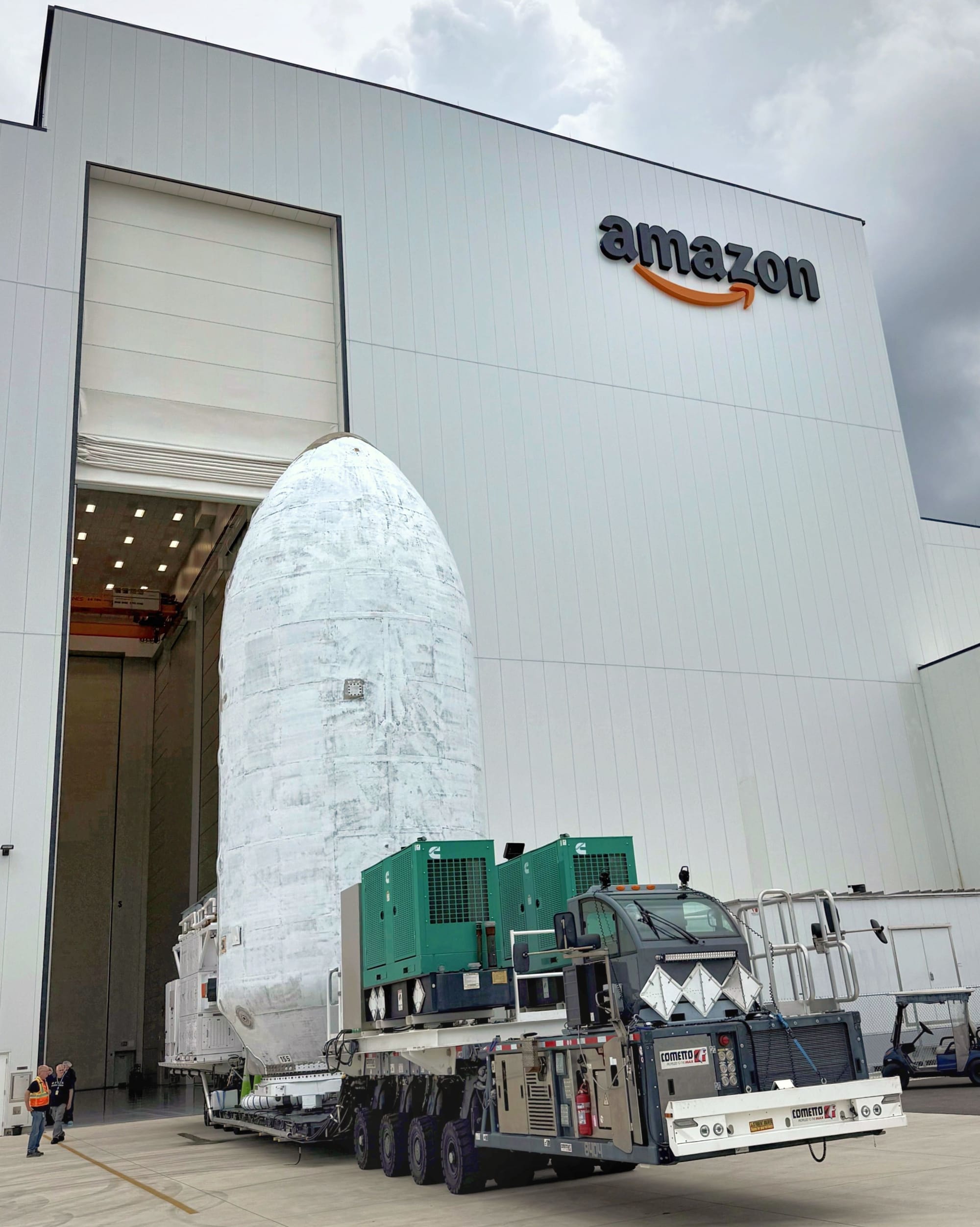
To assist in competing against other internet mega-constellations, Amazon has partnered with Japan's Nippon Telegraph and Telephone, America's Verizon, and the UK's Vodafone to bring services directly to consumers. Furthermore, the company is teaming up with Airbus to provide its airliners with in-flight connectivity.
Rather ironically, the provider of today's Kuiper launch, SpaceX, has its own internet mega-constellation known as Starlink, which had a launch from California hours prior. The Starlink constellation is currently the dominant player for low Earth orbit-based satellite internet, with around 6,000 satellites in orbit and over five million customers receiving services. SpaceX's synergy of having both Starlink and Falcon 9 allows for more frequent additions to the constellation, with at least one launch per week.
Minimizing astronomical impacts
As Amazon expands its Kuiper constellation, its planned thousands of satellites could have an impact on astronomy. In June, the company announced that it had signed a coordination agreement with the U.S. National Science Foundation to support both the expansion of the constellation and the continuation of astronomical science.
The coordination agreement reportedly establishes clear protocols and processes to ensure Kuiper can deliver its services to customers worldwide while minimizing interference with astronomical observations. Ensuring this, the agreement is based on months of technical collaboration between Amazon's teams and the National Science Foundation's Optical-Infrared Astronomy Research Laboratory and Radio Astronomy Observatory, alongside feedback from the astronomy community. Speaking on the collaboration, Chris Hofer, Head of Kuiper's International Spectrum Management and Strategy, stated:
"We’ve been engaged with the astronomy community since the initial design and development of Project Kuiper, and we’re pleased to build on that collaboration with a formal coordination agreement with [National Science Foundation]," – "This agreement underscores our commitment to responsible space operations and our belief that satellite broadband and ground-based astronomy can successfully coexist, and we look forward to continuing that work as we deploy our full satellite constellation."
To continue to mitigate impacts into the future, the agreement and its framework are set to evolve alongside technological advancements in both satellite operations and astronomical research.
What is Falcon 9?
Falcon 9 is currently the world's only operational partially reusable medium-lift launch vehicle. The rocket is manufactured and operated by the American space company SpaceX. Falcon 9 currently launches from Vandenberg Space Force Base, in California, and Cape Canaveral, in Florida.
For recovery, Falcon 9 has four grid fins and four landing legs on the first-stage. The first stage either lands vertically on a drone ship or a landing pad back near its launch site, landing back at the launch site causes a reduction in payload capacity.
SpaceX claims that Falcon 9 can send up to 22,800 kilograms into low Earth orbit when expended or 18,400 kilograms when reused. Similarly, it can send up to 8,300 kilograms into geosynchronous transfer orbit when expended or 5,500 kilograms when reused.
The first-stage is powered by nine Merlin 1D engines burning rocket-grade kerosene and liquid oxygen to generate 771 tons of thrust. The second-stage is powered by a single Merlin 1D vacuum engine burning rocket-grade kerosene and liquid oxygen to generate 95 tons of thrust.
On the pad, the rocket is 70 meters tall with the first and second stages 3.7 meters in diameter, the fairing is 5.2 meters in diameter and tapers out from the top of the second-stage. Fully fuelled Falcon 9 weighs approximately 549,000 kilograms.

